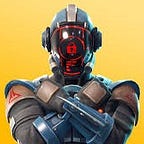It’s an age-old question — what does it mean to be human? Is there a deep existential answer? Or can it be divined by simply studying how clean we keep a car or how we overtake someone on the highway? With a unique blend of sci-fi and realistic fiction, Nic Kelman’s “How to Pass as Human” creates a unique reading experience that provides interesting insights into the strangeness of human life and interaction.
“How to Pass as Human” is a book “written” by Android 0, otherwise known as Zach, who is the first sentient android attempting to assist future androids in adapting to human society. In the novel, Zach goes through a process of self-discovery, learning about his purpose in life and how he was created. This culminates when he meets Andrea, a woman who helps him in his search for his father, i.e. his creator, and to discover what it means to be human.
The book really should be read as two parts: The narrative or plot, and the graphics/”non-fiction” portions that read like a how-to manual for future androids. The narrative side is structured like a journal of sorts, with Zach recalling the events of each day as he slowly but surely adapts into society. The basic plot is reasonably straightforward. While not necessarily bad, it follows common fictional tropes. In the end, Zach finds his father and gets the girl. To that extent, I’m not sure the plot would stand as its own. The meaning of human existence isn’t found in the basic plot.
However, each journal entry is punctuated by infographic-like pages on Zach’s notes and observations as a non-fictional presentation of data. These pages have graphs, charts, diagrams, and other visuals that I found extraordinarily fun to read, and they provide a break between the more typical style of narration. Such observations include: How humans arrange their furniture, the amount of time they spend doing certain activities, and their daily routines and behaviours, such as “facial expressions for seduction” in a section on Reproductive Habits. Basically, everything needed to know to “pass as human.” To us, these things are standard aspects of human life, trivial and mundane, but from the perspective of an outside “observer” like Zach, the majority of these seem arbitrary and almost absurd. Navigating them is the key to navigating human existence.
I was quite amused by Zach’s depiction of humans as strange and arbitrary creatures, which is quite ironic as I could relate to many of the scenarios he describes. While most of the graphs and statistics are made-up and the events of the book are fictitious, Zach’s observations are stunningly real and could be considered as non-fiction, even though they were not made by a sentient android. I really appreciated how consistently Kelman maintains Zach’s narrative voice throughout these sections.
Ultimately, I found the structure of the novel quite fascinating and the graphics really compelling. I believe that it is only when these two are read in conjunction that the book gains value, and there is a ton of value. Going forward, you certainly may find yourself questioning your own behaviour and habits and laughing at how strangely arbitrary it all can be. With the above points taken into account, I would recommend this book to anyone, just for its originality alone if not for its phenomenal illustrations and unique style. How to Pass as Human succeeds in capturing the bizarreness of the human race through the perspective of an atypical protagonist.
